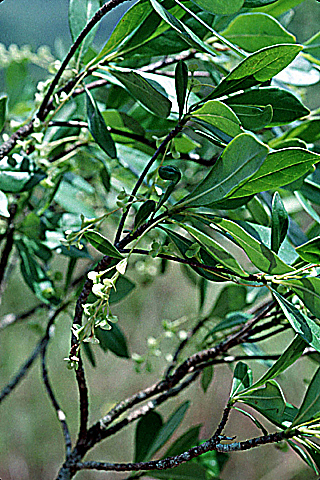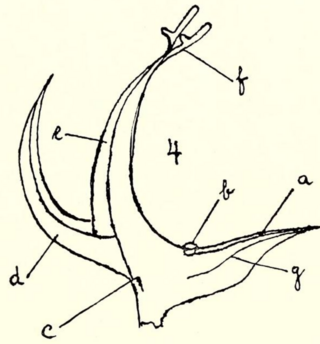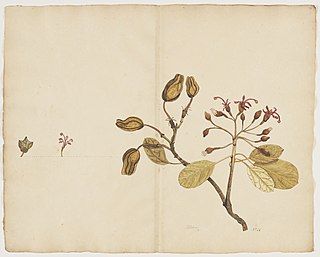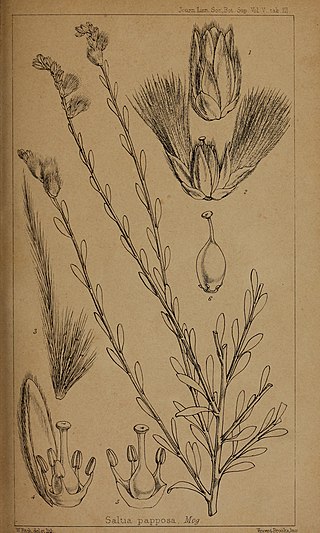
Sorghum or broomcorn is a genus of about 25 species of flowering plants in the grass family (Poaceae). Sorghum bicolor is grown as a cereals for human consumption and as animal fodder.

Picris (oxtongues) is a genus of flowering plants in the family Asteraceae described as a genus by Linnaeus in 1753.

Conrad Moench was a German botanist, professor of botany at Marburg University from 1786 until his death.

Lamarckia is a Eurasian and African plant in the grass family.
Acostia is a genus of South American plants in the grass family.
Steyermarkochloa is a genus of plants in the grass family. The only known species is Steyermarkochloa angustifolia(Spreng.) Judz., which is native to Colombia (Guainía), Venezuela (Amazonas), and Brazil (Amazonas).
Neesiochloa is a genus of Brazilian plants in the grass family. The only known species is Neesiochloa barbata. It is native to eastern Brazil.

Acunaeanthus is a monotypic genus of flowering plants in the family of Rubiaceae. The genus contains only one known species; Acunaeanthus tinifolius, which is endemic to Cuba.

Aenhenrya is a monotypic genus of terrestrial orchids that spread by means of underground rhizomes. Only one species is known, Aenhenrya rotundifolia, a very rare plant and endemic to southern India.

Ungeria is a monotypic genus of flowering plants belonging to the family Malvaceae. It just contains one species, Ungeria floribundaSchott & Endl. It is also in the Helicteroideae subfamily and Helictereae tribe.
Lorenzochloa is a monotypic genus of perennial plants in the grass family. The only known species is Lorenzochloa erectifolia(Swallen) Reeder & C.Reeder They are native to South America. It was formerly placed in the Ortachne genus, as Ortachne erectifolia, until phylogenetic analysis.

Vahlodea is a monotypic genus of plants in the grass family. The only known species is Vahlodea atropurpurea(Wahlenb.) Fr.
Parodiophyllochloa is a genus of Latin American plants in the grass family.
Riqueuria is a monotypic genus of flowering plants belonging to the family Rubiaceae. It only contains one known species, Riqueuria aveniaRuiz & Pav.
Komaroviopsis is a monotypic genus of flowering plants belonging to the family Apiaceae. It contains only one species, Komaroviopsis anisoptera, native to Uzbekistan in Central Asia.
Parodiodoxa is a genus of flowering plants belonging to the family Brassicaceae. It just contains one species, Parodiodoxa chionophila(Speg.) O.E.Schulz

Hullsia is a genus of flowering plants in the family Asteraceae. It only contains one species, Hullsia argillicola.
Klossia montana is a species of flowering plants in the family Rubiaceae. It is the only species in the monotypic genus Klossia.

Saltia is a monotypic genus of flowering plants belonging to the family Amaranthaceae. It just contains one species, Saltia papposa. It is in the Amaranthoideae subfamily.
Schreiteria is a monotypic genus of flowering plants belonging to the family Montiaceae. It is represented by the single species of Schreiteria macrocarpa(Speg.) Carolin. It is native to north-western Argentina.











